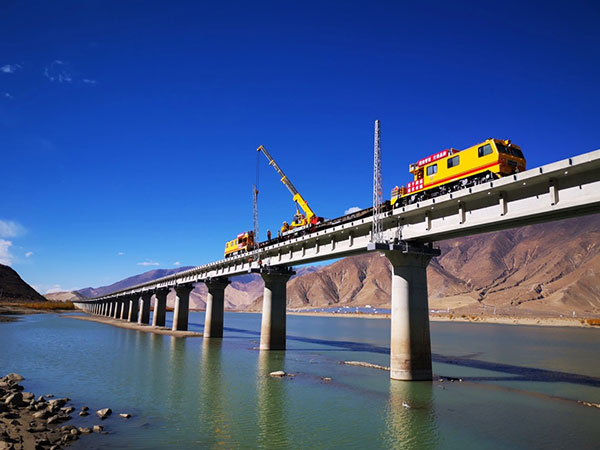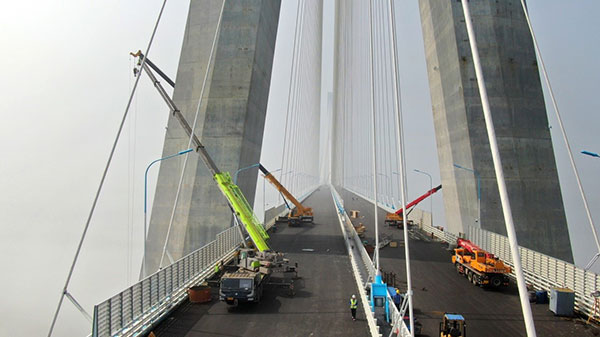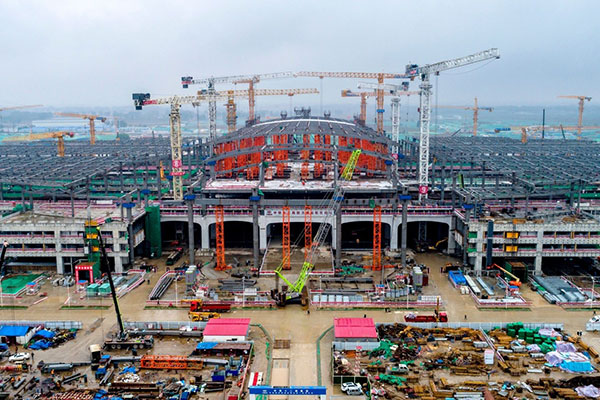
A guideline on advancing the development of western regions in the new era to promote coordinated regional development was issued prior to China's annual sessions of top legislature and political advisory body.
The 10,000 character document, issued by the Communist Party of China Central Committee and the State Council, raised 36 measures to further develop the western regions, including optimizing industrial and energy structures, strengthening the building of transportation network, promoting open commercial and trade cooperation, providing support for the financial sector, and improving ecological environment management. These measures are expected to bring about new major opportunities for the development of the western regions.
To step up implementation of the regional development strategies and promote large-scale development in the western regions is also covered by this year’s government work report submitted to the National People’s Congress (NPC).

In Ningxia Hui autonomous region in Northwest China, the favorable taxation policy for the western development has created a lot of benefits for local enterprises.
Between 2011 and the first quarter of 2020, 2,995 enterprises under Ningxia’s tax system have been covered by favorable taxation policies, and saw a total of 14.95 billion yuan in tax reductions and exemptions. These enterprises were mainly coke-making enterprises, thermal power plants, currency and financial services providers and electronics manufacturers encouraged to develop by the western regions and the nation at large.
On April 28, the Ministry of Finance announced it will extend the preferential corporate income tax policies for certain companies located in West China until the end of 2030.
“The policy means a boost for enterprises in western region, as it plays a very good role in promoting the overall improvement of the economic strength of the region, adjusting and transforming the industrial structure of distinctive advantages, cultivating the momentum for endogenous development, and improving the anti-risk capability,” said Yang Yuanwei, head of the corporate income tax department of Ningxia Hui autonomous region Tax Service, State Taxation Administration.
The western regions have made historic achievements in economic and social development since the implementation of the Western Development Strategy 20 years ago.

The GDP of the 12 western provinces, autonomous regions and municipalities increased from 1.5 trillion yuan in 1999 to 20.5 trillion yuan in 2019, accounting for 20.7% of the national total, 3.6 percentage points higher. The average annual GDP growth in the western regions stood at 10.9%, higher than the national average.
From 2012 to 2019, the rural poverty population in the western regions decreased from 50.86 million to 3.23 million, and the incidence of poverty decreased from 17.5% to 1.1%.
By the end of 2019, more than 90% of the poverty-stricken counties in the western regions had been lifted out of poverty. Besides, the western regions had returned a total of 9.13 million hectares of farmland to forest and grassland, further expanding the forest coverage.
“The COVID-19 epidemic has exerted a huge impact on China's economic and social development, as well as regional development. This requires us to accelerate the implementation of the regional development strategies, focus on promoting coordinated regional development and step up the cultivation of growth drivers, so as to effectively hedge against the epidemic’s impact," Cong Liang, secretary-general of the National Development and Reform Commission (NDRC), said on May 24.
To promote coordinated regional development under new circumstances, it is necessary to adjust and improve the regional policy system in accordance with economic laws and accelerate the formation of a regional economic structure featuring complementary advantages and high-quality development.
To create a new pattern for the development of the western regions in the new era, it is imperative to solve the problem of unbalanced and insufficient development and give full play to the comparative advantages of the western regions.
The development of the western regions and the Belt and Road Initiative are synergetic and complement each other. With the rapid development of the western regions, the size of the economy has expanded, and production, logistics, warehousing, exchange and other capabilities have also been further improved. This will consolidate the foundation for Belt and Road cooperation and expand its influence.